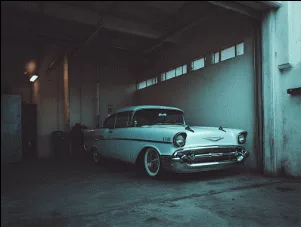Keeping your car’s exterior pristine is a top priority for many vehicle owners. Yet, even with regular washing and waxing, some contaminants stubbornly cling to the paint, making the surface rough to the touch and dull in appearance. Enter the clay bar — a game-changing tool in car detailing that’s designed to restore that showroom shine. Let’s explore what makes this unassuming product an essential part of any car care routine.
What is a Clay Bar?
A clay bar is a malleable, resin-based product specifically engineered to remove embedded contaminants from a car’s surface. These impurities include tar, tree sap, industrial fallout, and even microscopic metal particles that regular washing simply can’t eliminate. By using a clay bar car enthusiasts can achieve a silky-smooth finish, creating the perfect base for waxing or sealing.
Originally developed for professional detailers, clay bars are now widely available and easy enough for anyone to use. They come in various grades, from fine to heavy-duty, depending on the level of contamination and the condition of your car’s paint.
How Does a Clay Bar Work?
The process is straightforward yet incredibly effective. When glided over a lubricated surface, the clay grabs onto contaminants that protrude from the paint’s surface. These particles are lifted into the clay, leaving behind a perfectly smooth and clean finish. This step is vital because it ensures that subsequent treatments like polishing and waxing adhere better, enhancing their effectiveness and longevity.
When Should You Use a Clay Bar?
While washing your car removes surface dirt, deeper contaminants often remain. To determine if your vehicle needs claying, perform the “plastic bag test.” Simply place your hand inside a plastic bag and gently run it over your car’s paint. If you feel bumps or rough patches, it’s time to bring out the clay bar.
Typically, you should clay your car two to three times a year, depending on factors such as your driving environment and the level of exposure to contaminants. For vehicles parked near industrial areas or under trees, claying might be required more frequently.
Step-by-Step Guide to Using a Clay Bar
- Wash Your Car Thoroughly: Start with a clean car to remove loose dirt and debris. This reduces the risk of scratching the paint during the claying process.
- Prepare Your Clay Bar and Lubricant: Most clay bars come with a dedicated lubricant, but you can also use a detailing spray or a mixture of water and car shampoo. Break off a small piece of the clay and knead it until it’s pliable.
- Work in Small Sections: Spray the lubricant generously on a small section of your car’s surface. Glide the clay bar gently across the area in straight lines, not circular motions. Avoid applying excessive pressure; let the clay do the work.
- Check the Clay Frequently: Inspect the clay bar periodically for accumulated contaminants. Fold and knead it to expose a clean surface as needed. Discard the clay if it becomes too dirty to use.
- Wipe and Inspect: After claying each section, wipe it down with a clean microfiber towel and inspect the surface. It should feel smooth and look noticeably cleaner.
- Finish with Wax or Sealant: Claying removes protective layers, so it’s crucial to apply a wax or sealant afterward. This step protects your paint and enhances the shine.
Benefits of Claying Your Car
Using a clay bar car detailers swear by offers multiple benefits:
- Enhanced Shine: Claying removes embedded contaminants that dull your car’s finish, restoring its natural gloss.
- Better Wax and Sealant Adhesion: A clean, smooth surface allows waxes and sealants to bond more effectively, resulting in longer-lasting protection.
- Extended Paint Life: Removing harmful particles reduces the risk of paint degradation and oxidation over time.
- Improved Resale Value: A well-maintained exterior signals to potential buyers that the car has been cared for, increasing its appeal and value.
Common Mistakes to Avoid
- Skipping Lubrication: Never use a clay bar on a dry surface. Insufficient lubrication can cause scratches and marring.
- Using Too Much Pressure: A light touch is all that’s needed. Pressing too hard can damage your car’s paint.
- Reusing Contaminated Clay: Once the clay is saturated with debris, it’s time to replace it. Reusing dirty clay can cause scratches.
- Neglecting to Wax Afterward: Failing to reapply protection leaves your paint vulnerable to environmental damage.
Final Thoughts
Incorporating a clay bar into your car care routine is a small investment of time and effort that yields significant results. Whether you’re preparing for a car show, boosting your vehicle’s resale value, or simply enjoying the satisfaction of a flawless finish, claying is a must-have skill for every car enthusiast. With the right technique and a little patience, your car’s exterior will look and feel like it just rolled off the lot.




